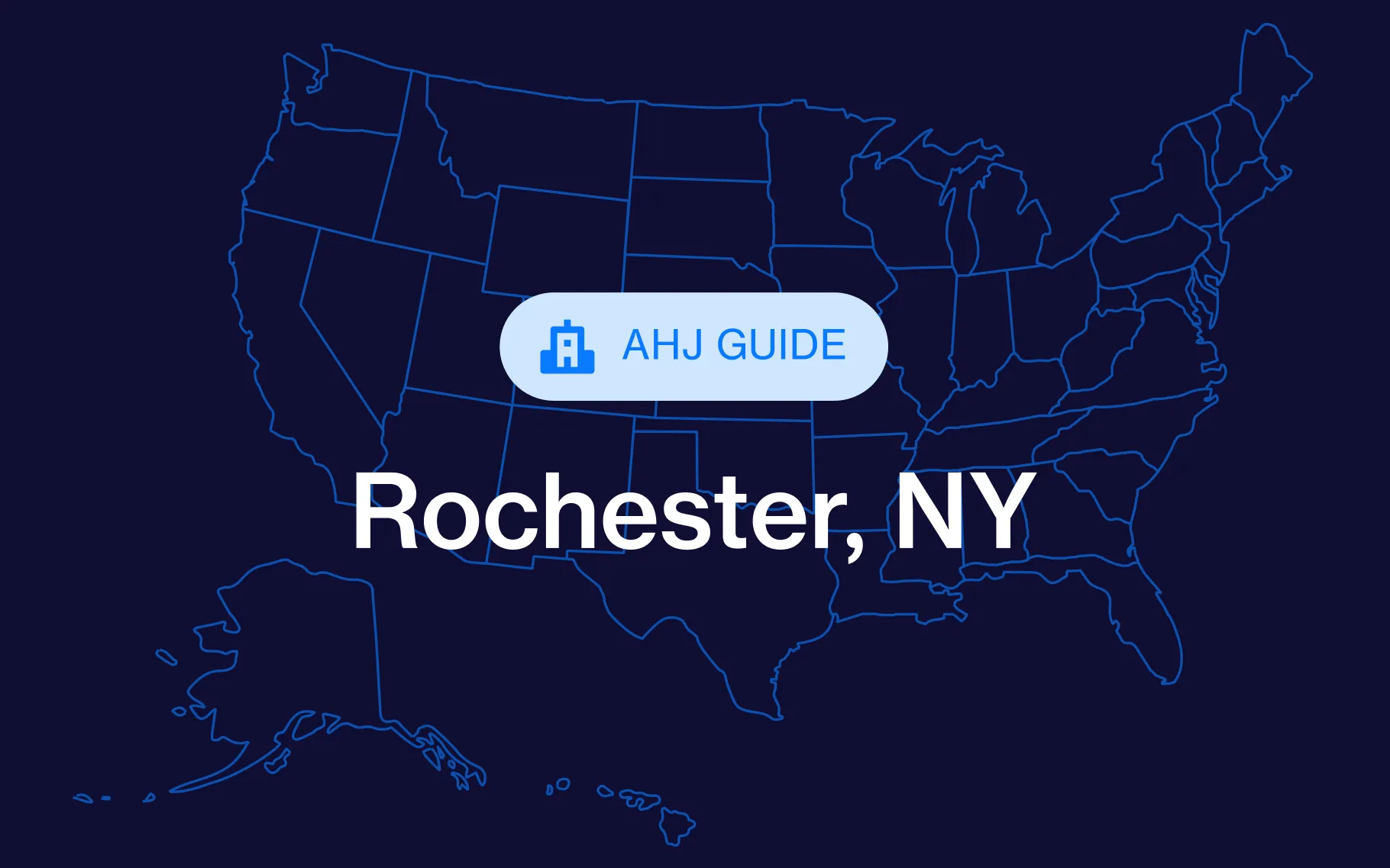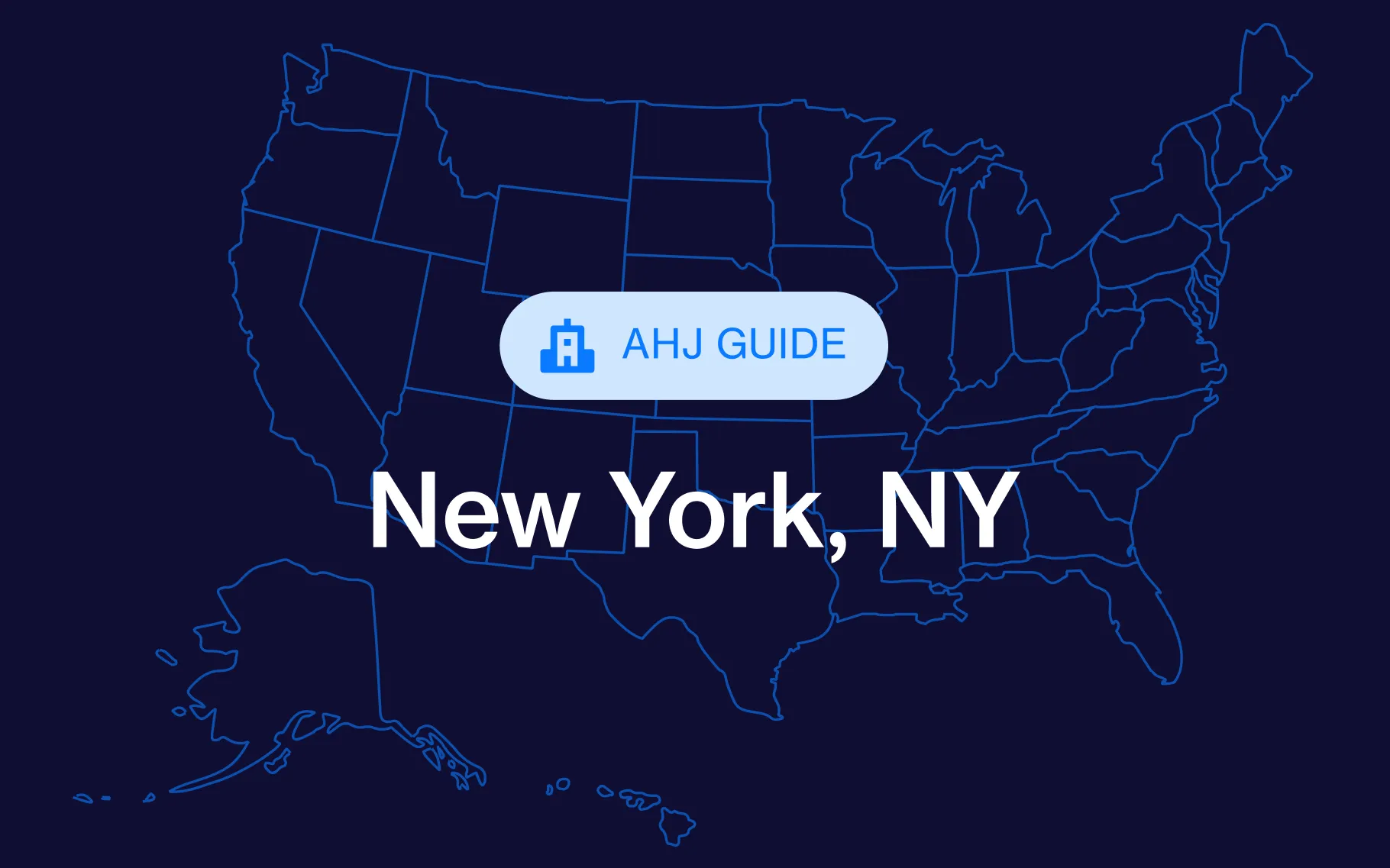If you need to pull a permit anywhere in New York, you’ll need to first understand the ins and outs of New York State building permit requirements.
Let's walk through the basics of what you need to know about building permits in New York, including which projects require a permit, how to get one, and how to simplify the process.
What requires a building permit in New York
In New York State, all major construction projects require a building permit. These permits exist to make sure buildings are safe and meet all local and state codes.
Some projects that typically need a permit include:
- New building construction
- Major renovations or additions to existing buildings
- Electrical work
- Plumbing installations or changes
- HVAC system installations or changes
- Structural changes to a building
- Demolition of structures
- Installing or replacing a roof
- Building a deck or porch
- Installing a pool or hot tub
- Changing the use of a building (such as turning a house into a business)
This list is not exhaustive, and different cities and towns in New York have different rules about what needs a permit. Always check with your local building department to make sure.
Who issues building permits in New York?
Building permits are issued by local government agencies throughout New York State. These might be city or town building departments, or county building departments in the case of some rural areas.
New York City has its own Department of Buildings, which you can access in person or online.
New York building permit costs
Permit costs vary widely across the state and are typically calculated based on project valuation, square footage, or type of work. Here are a few examples:
New York City (DOB)
In New York City, permit fees are tied to job type and construction valuation. Typical fees range from $100 to several thousand dollars.
- Minor interior alterations: ~$250–$500
- Full renovations or additions: ~$1,000+
- Demolitions: ~$400+
Additional fees may include filing fees, special inspections, energy code reviews, and penalties for unpermitted work.
Outside NYC (Long Island, Westchester, Upstate)
- Hempstead: Fees may be $0.35/sq ft for residential construction.
- Rochester: Permit fee = 1% of construction value.
- Syracuse: Flat permit fees by category (e.g., $75 for plumbing permit, $200+ for building permit depending on scope).
Unique considerations when permitting in New York
New York presents several permitting challenges that are unique to the state:
1. New York City’s DOB process
- NYC uses DOB NOW, an online portal for all permitting, plan review, and inspections.
- Permits often require sign-off from licensed professionals (Registered Architects, Professional Engineers).
- Multiple permits may be needed: General Construction (GC), Plumbing (PL), Electrical (EW), and Fire Suppression (FS).
- Asbestos and lead paint clearance may be required for older buildings.
2. Historic preservation
Cities like NYC, Albany, and Buffalo have Landmark Preservation Commissions that must approve alterations to designated historic properties.
Additional review time and documentation (e.g., materials matching, facade drawings) is often needed.
3. Environmental & energy code requirements
NY enforces a strict energy conservation code, especially in NYC and areas aligned with LEED/green building initiatives.
Some areas require stormwater pollution prevention plans (SWPPPs) and environmental site assessments.
4. Zoning and use restrictions
Zoning challenges are common, especially in NYC where special purpose districts and zoning resolutions may limit scope of work.
Use group classifications, lot coverage, floor-area ratio (FAR), and egress requirements must be verified early.
5. Seasonal weather constraints
In upstate regions, cold-weather restrictions may limit foundation and exterior work between November and March.
How to get a building permit in New York State
Here’s a simplified breakdown of the general permitting process across most New York municipalities:
Step 1: Determine permit requirements and prepare application materials
Confirm whether your project requires a building, trade, or zoning permit.
For NYC projects, register your project in DOB NOW and identify required filing types.
Most permit applications require:
- Completed permit application form
- Project plans prepared by a licensed architect or engineer
- Site plans, surveys, and zoning analysis
- Energy code compliance documents
- Contractor license and insurance information
- Environmental or landmark approvals (if applicable)
Step 2: Submit application
Submit via local e-permitting portals or in person at the town/city building department.
Step 3: Plan review and corrections
Plans are reviewed for compliance with:
- NY State Building Code
- Local zoning ordinances
- Energy, accessibility, and fire codes
Corrections are common — respond quickly to avoid delays.
Step 4: Pay permit fees
Once approved, pay the required permit fees. Some municipalities may require payment before plan review begins.
Step 5: Permit issuance and inspections
Once issued, post the permit visibly at the jobsite. Schedule required inspections (framing, MEP, final) through DOB NOW or local systems.







